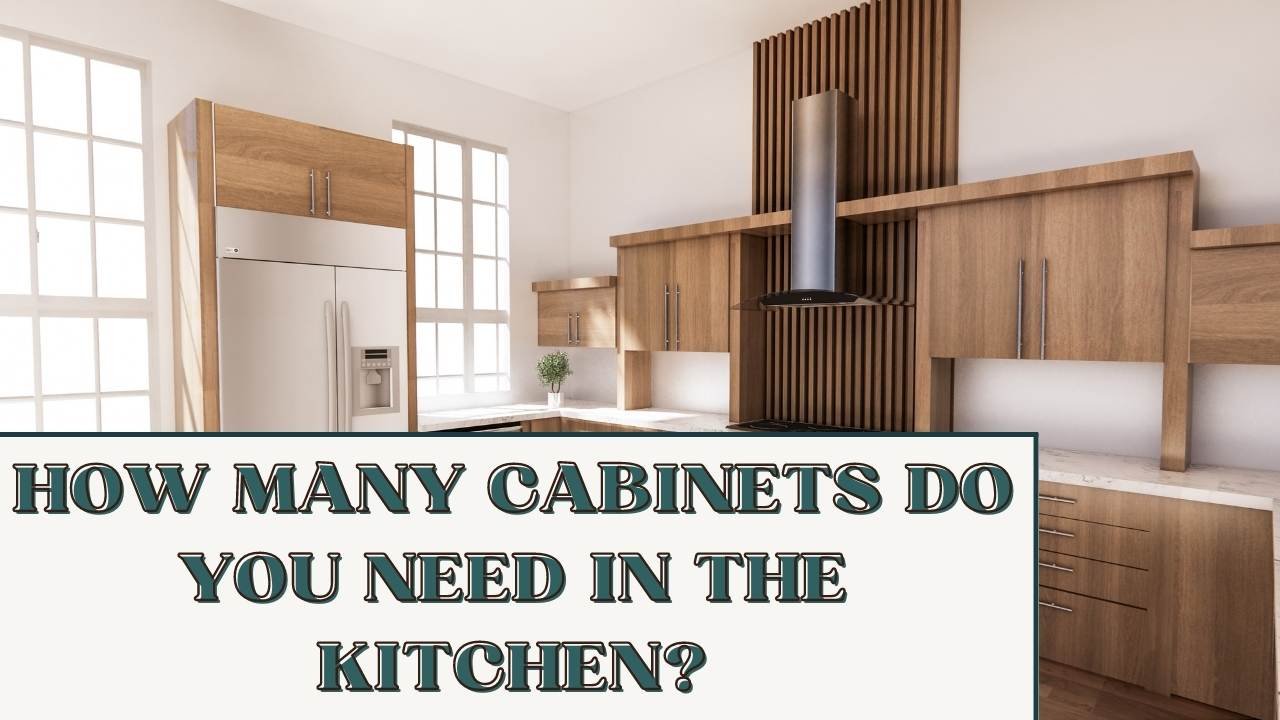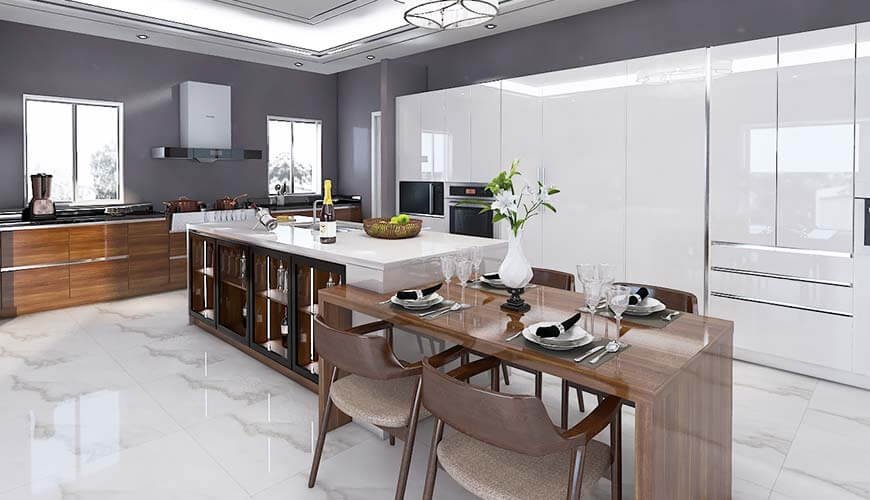The number of kitchen cabinets you need depends on your storage requirements and kitchen size. Generally, most kitchens need at least 10-12 cabinets.
Choosing the right number of kitchen cabinets is crucial for optimal storage and functionality. Assess your kitchen space and storage needs to determine the ideal cabinet count. Consider factors like the size of your family, cooking habits, and the types of items you need to store.
A well-organized kitchen not only looks aesthetically pleasing but also enhances your cooking experience. Efficient storage solutions can make your kitchen more user-friendly and reduce clutter. Proper planning ensures you have enough space for utensils, cookware, and pantry items. Invest in quality cabinets to maintain a tidy and efficient kitchen environment.
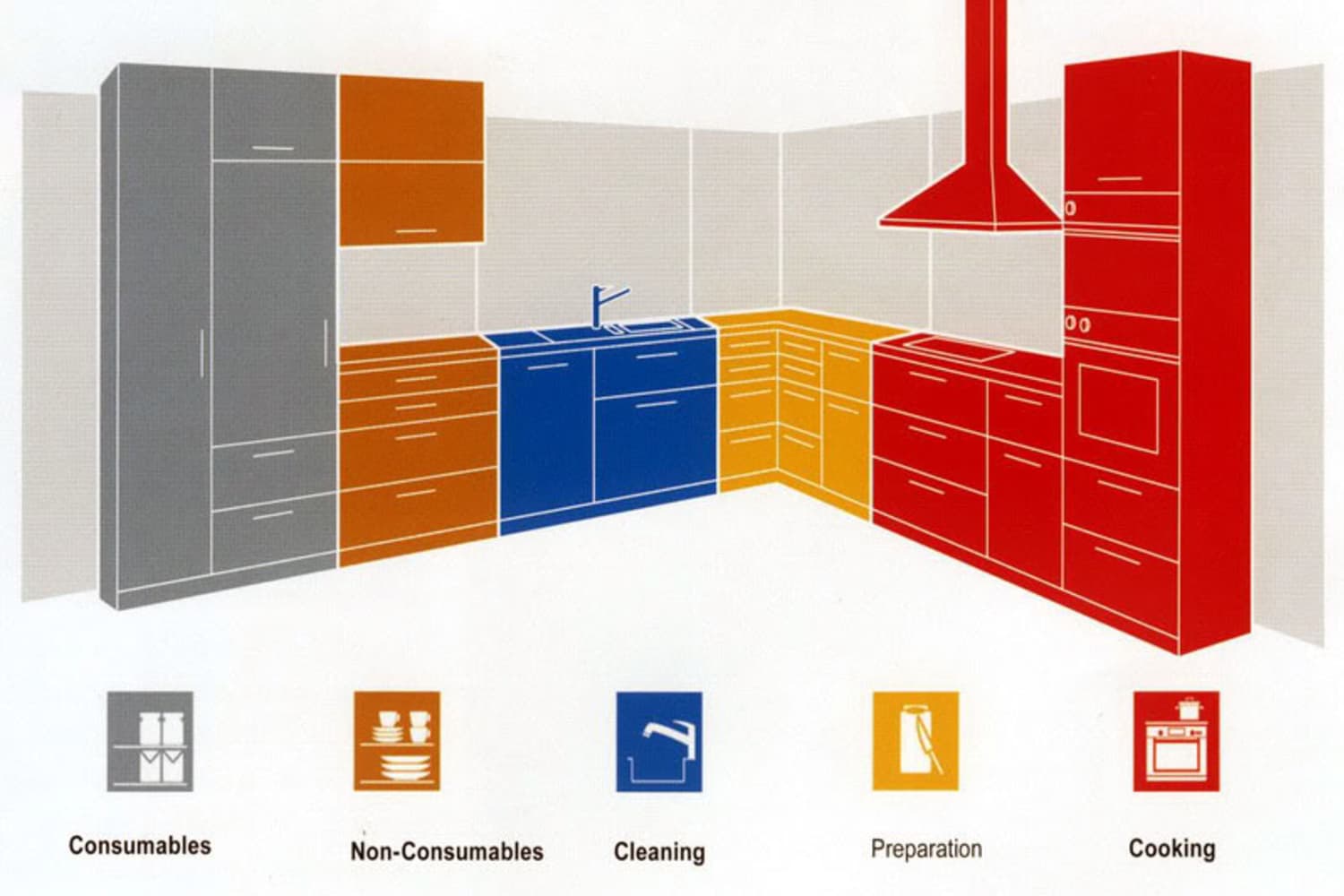
Table of Contents
ToggleAssessing Your Kitchen Space
Planning your kitchen cabinets starts with understanding your kitchen space. This ensures you maximize storage and maintain an efficient workflow. Let’s dive into how you can assess your kitchen space accurately.
Measuring Your Kitchen
The first step is to measure your kitchen. Accurate measurements ensure you choose the right cabinet sizes.
- Measure the length of each wall.
- Note the ceiling height.
- Measure doors, windows, and any openings.
Use a tape measure for precise results. Record all measurements in a notebook.
Identifying Key Areas
Next, identify the key areas in your kitchen. These include the cooking zone, cleaning zone, and storage zone.
- Cooking Zone: This includes the stove and oven. You need cabinets for pots, pans, and utensils.
- Cleaning Zone: This area surrounds the sink. Allocate cabinets for cleaning supplies and dishware.
- Storage Zone: This includes your pantry and fridge. Plan cabinets for food storage and small appliances.
Here’s a simple table to help you visualize:
| Zone | Items to Store |
|---|---|
| Cooking | Pots, pans, utensils |
| Cleaning | Cleaning supplies, dishware |
| Storage | Food, small appliances |
These steps will help you decide the number of cabinets you need. Plan each area carefully for an organized and efficient kitchen.
Determining Storage Needs
Deciding on the number of kitchen cabinets can be tricky. It’s crucial to assess your storage needs. This ensures a functional and organized kitchen. Let’s dive into how you can determine your storage requirements.
Evaluating Your Inventory
The first step is to take stock of what you have. List every kitchen item you own, from pots and pans to cutlery and small appliances. This list will help you understand the amount of space each item requires.
- Group similar items together.
- Note the sizes of bulky items.
- Consider the frequency of use for each item.
Once you have this list, categorize items based on their storage needs:
| Category | Example Items | Storage Type |
|---|---|---|
| Cookware | Pots, Pans | Deep Cabinets |
| Utensils | Spatulas, Spoons | Drawers |
| Appliances | Blender, Toaster | Countertop or Shelves |
| Food Items | Canned Goods, Spices | Pantry or Shelves |
Planning For Future Storage
It’s essential to plan for future needs. Think about items you may purchase later. Consider your lifestyle and cooking habits. Do you love baking? You might need more space for baking trays and mixers.
- Estimate how much your inventory might grow.
- Allocate extra space for potential new items.
- Think about seasonal items like holiday dishes.
Flexible storage solutions can help. For example:
- Adjustable shelves for various items.
- Pull-out drawers for easy access.
- Corner cabinets to utilize every inch of space.
Proper planning ensures your kitchen stays organized. It prevents clutter and keeps everything within reach. Smart storage solutions make your kitchen efficient and enjoyable to use.
Types Of Kitchen Cabinets
Choosing the right kitchen cabinets is crucial. Different types of cabinets serve specific purposes. Knowing these types helps in planning your kitchen layout.
Base Cabinets
Base cabinets are the foundation of your kitchen. They sit on the floor and support countertops. These cabinets are perfect for storing heavy items.
- Available in various widths and depths
- Ideal for pots, pans, and large kitchen appliances
- Can include drawers for utensils and smaller items
Standard height for base cabinets is 34.5 inches. This measurement does not include the countertop.
Wall Cabinets
Wall cabinets are mounted on the wall. They provide extra storage without taking up floor space. These cabinets are great for spices, dishes, and glassware.
- Typically 12 inches deep
- Height can vary from 12 to 42 inches
- Available in multiple widths
Wall cabinets help keep counters clutter-free. They are essential for an organized kitchen.
Tall Cabinets
Tall cabinets offer maximum storage. These cabinets extend from floor to ceiling. They are perfect for pantry items and bulky kitchen equipment.
- Commonly 84 to 96 inches in height
- Can include shelves, drawers, and compartments
- Great for storing brooms, mops, and other tall items
Tall cabinets often serve as pantry units. They can also house built-in ovens and microwaves.
Optimizing Cabinet Placement
Optimizing your kitchen cabinet placement can transform your cooking experience. Proper placement ensures a smooth workflow and makes the kitchen more functional. This section dives into two critical aspects: Creating Work Zones and Ensuring Accessibility.
Creating Work Zones
Creating work zones in the kitchen can save time and effort. Divide your kitchen into distinct zones based on tasks.
- Preparation Zone: This is where you chop, mix, and prepare ingredients. Place cutting boards and mixing bowls here.
- Cooking Zone: This zone includes the stove and oven. Store pots, pans, and cooking utensils nearby.
- Cleaning Zone: This area surrounds the sink and dishwasher. Keep dish soap, sponges, and towels within reach.
Using zones helps streamline your workflow. It also reduces unnecessary movement around the kitchen.
Ensuring Accessibility
Ensuring accessibility means everything should be within easy reach. This makes cooking more enjoyable and less tiring.
- Frequently Used Items: Store these in lower cabinets or drawers. This includes plates, cups, and daily utensils.
- Occasionally Used Items: Place these in higher cabinets. Think about baking dishes or special cookware.
- Heavy Items: Store these in lower cabinets to avoid lifting injuries. Keep them close to the ground.
Organizing items based on usage frequency makes the kitchen user-friendly. It also enhances safety and efficiency.
Custom Vs. Pre-made Cabinets
Choosing between custom cabinets and pre-made cabinets is a big decision. Each option has unique features. Understanding these features helps you make the best choice for your kitchen.
Pros And Cons
Both custom and pre-made cabinets have their own advantages and disadvantages. Below is a summary of the key points:
| Custom Cabinets | Pre-Made Cabinets |
|---|---|
|
|
|
|
Cost Considerations
Custom cabinets usually cost more. This is due to the personalized design and high-quality materials. They also require skilled labor, which adds to the expense.
Pre-made cabinets are more budget-friendly. They come in standard sizes and materials, reducing their cost. They are mass-produced, which also helps keep prices low.
Here’s a quick cost comparison:
| Type | Price Range |
|---|---|
| Custom Cabinets | $500 – $1,200 per linear foot |
| Pre-Made Cabinets | $100 – $300 per linear foot |
Note: Prices may vary based on materials, design, and location.
Think about your budget and kitchen needs. This will help you decide whether custom or pre-made cabinets are right for you.
Maximizing Small Kitchen Spaces
Maximizing small kitchen spaces can be a challenge, but it’s achievable. The key lies in smart design choices that optimize every inch. By focusing on the right strategies, you can create a functional and stylish kitchen.
Utilizing Vertical Space
Small kitchens often lack horizontal space. That’s why it’s crucial to think vertically. Install tall cabinets that reach the ceiling. This provides extra storage without taking up floor space.
Use open shelves for easy access to frequently used items. Hooks and racks on walls can hold utensils, pots, and pans. This keeps countertops clear and organized.
Consider a pegboard wall. You can hang a variety of kitchen tools on it. This adds storage and a unique design element.
Incorporating Multi-functional Cabinets
Multi-functional cabinets save space and add versatility. Cabinets with pull-out trays or baskets offer more storage options. You can easily access items stored in the back.
Use cabinets with built-in organizers for cutlery, spices, and other small items. This keeps everything in its place and easy to find.
Consider a cabinet with a fold-out table. This provides extra counter space when needed and folds away when not in use. Perfect for small kitchens!
| Type of Cabinet | Function |
|---|---|
| Pull-out Trays | Easy access to deep storage |
| Built-in Organizers | Keeps small items sorted |
| Fold-out Table | Extra counter space |
- Tall Cabinets: Reach the ceiling for max storage.
- Open Shelves: Quick access and display space.
- Pegboard Wall: Hang various tools and utensils.
Expert Tips For Efficient Storage
Efficient storage in your kitchen is essential for a clutter-free space. Knowing how many kitchen cabinets you need can help. Here are some expert tips for making the best use of your cabinets.
Using Organizers And Dividers
Organizers and dividers can maximize your cabinet space. They keep your items neat and easy to find. You can use them in drawers and cabinets.
- Drawer organizers for utensils
- Dividers for baking sheets and cutting boards
- Spice racks for small jars
These tools help you use every inch of your cabinet space. Adjustable shelves are also helpful. They allow you to customize your storage for different items.
Labeling And Categorizing
Labeling your items can save you time. You won’t have to search for what you need. Categorizing items makes it easier to find them later.
- Group similar items together
- Use clear containers for dry goods
- Label shelves and drawers
With these tips, you can keep your kitchen organized. Labels and categories make your kitchen more efficient. You’ll always know where everything is.
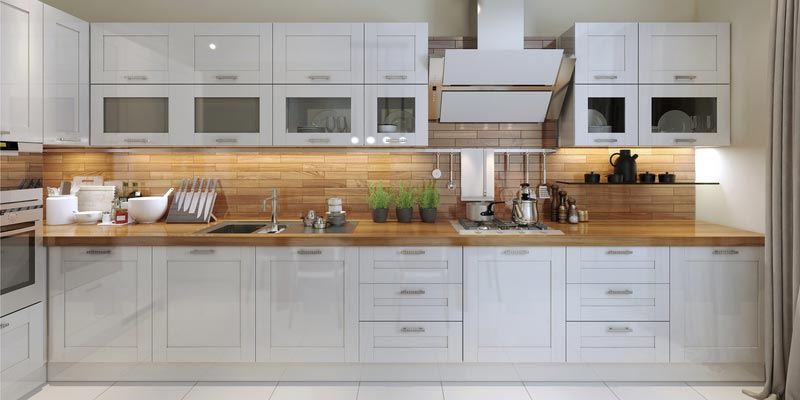
Common Mistakes To Avoid
Planning your kitchen cabinets can be challenging. Many people make common mistakes that affect functionality. Here are some errors to avoid.
Overcrowding Cabinets
Overcrowding cabinets is a big mistake. Too many items cause clutter. It gets hard to find what you need. Keep cabinets organized to make your kitchen efficient.
- Store items you use often in easy-to-reach places.
- Avoid putting too many things in one cabinet.
- Use dividers to keep similar items together.
Overcrowding can also damage your cabinets. Heavy items can cause shelves to sag. Distribute weight evenly to keep your cabinets in good shape.
Ignoring Workflow
Another common mistake is ignoring the kitchen workflow. Think about how you move in your kitchen. Place cabinets where they make sense for cooking and cleaning.
- Store pots and pans near the stove.
- Keep cleaning supplies under the sink.
- Position dishes and glasses near the dishwasher.
A good workflow makes cooking more enjoyable. It saves time and reduces stress. Plan your cabinets to match your cooking habits.
Ignoring workflow can lead to frustration. You’ll spend more time moving around the kitchen. Optimize your space to make everything more convenient.
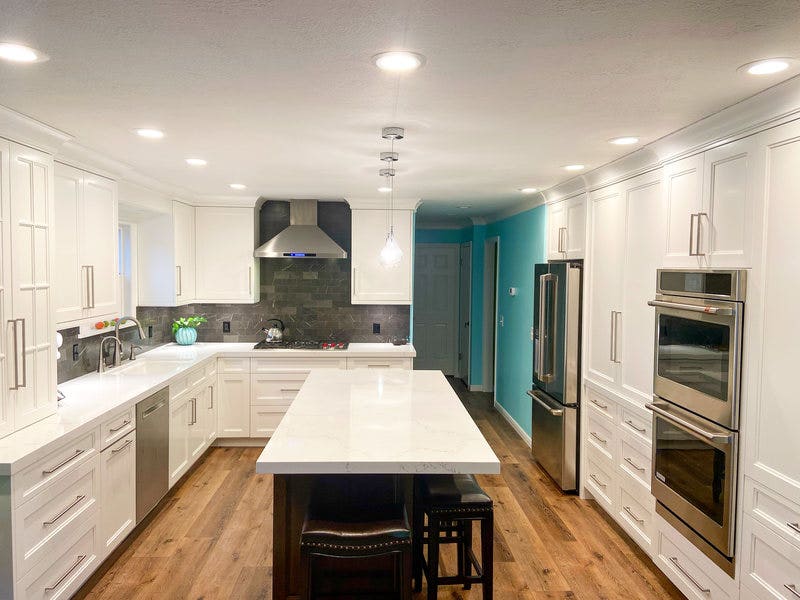
Frequently Asked Questions
How Many Cabinets Are Typical In A Kitchen?
A standard kitchen usually has 10-12 cabinets, including both wall and base units.
What Factors Determine Cabinet Quantity?
Kitchen size, layout, and storage needs dictate the number of cabinets required.
How To Plan Kitchen Cabinet Layout?
Measure space, consider workflow, and prioritize storage to plan an efficient cabinet layout.
Is There A Minimum Number Of Cabinets?
A small kitchen can function with as few as 6-8 cabinets.
How Much Storage Do I Need?
Assess your cookware, dishes, and pantry items to estimate storage needs.
Do Kitchen Islands Add Cabinet Space?
Yes, kitchen islands often provide additional storage and workspace.
Should I Have More Upper Or Lower Cabinets?
Balance is key; however, base cabinets typically offer more storage.
Are Custom Cabinets Worth It?
Custom cabinets maximize space and meet specific storage needs, but can be costly.
How To Maximize Cabinet Space?
Use organizers, pull-out shelves, and vertical storage to maximize cabinet space.
Do Open Shelves Reduce The Need For Cabinets?
Open shelves can supplement storage but don’t replace the need for closed cabinets.
Conclusion
Determining the number of kitchen cabinets depends on your storage needs and kitchen layout. Measure available space and consider your cooking habits. Consult a professional for personalized advice. By planning carefully, you’ll ensure a functional and organized kitchen. Remember, the right number of cabinets can enhance both efficiency and aesthetics.
